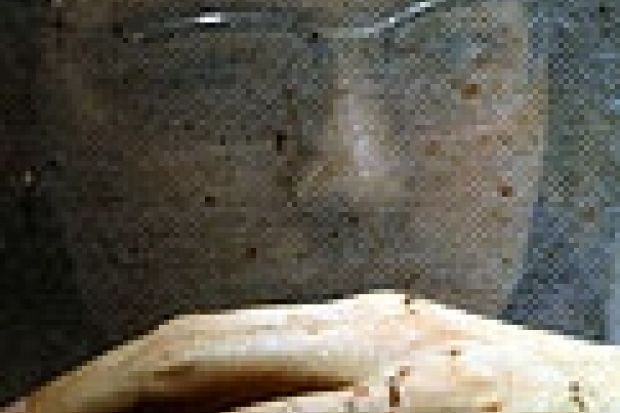If mosquitoes lost their taste for human blood or could no longer play host to Plasmodium, the malaria parasite, there would be 1 million fewer deaths every year. The development of mosquitoes with either of or both these characteristics is now a realistic possibility.
Godfather to the new and less malign insects underpinning these hopes is Andrea Crisanti, a professor in the department of biology at Imperial College, London. In June, he wrote to Nature reporting his success in creating the world’s first transgenic mosquito: the culmination of 15 years of experiment and, in itself, a remarkable achievement. At that time it was the insect he wanted to keep centre stage. Now he is willing to reflect on the implications of his creation, and how it might help to control malaria.
A transgenic organism is one in which the normal genome has been altered by the addition of a gene or genes from other species. The technique that Crisanti uses was developed in the 1980s using the geneticists’ favourite plaything, the fruit fly Drosophila. The idea is simple enough in principle. “What you do is inject a particular piece of DNA into a mosquito egg,” Crisanti says. The DNA is chosen for its property of being able to “jump”: to integrate itself into a new genome. “If you want to introduce an alien gene into a mosquito, you put the gene, like a piece of cargo, into the jumping section. The cargo can be any gene you like.”
To make this trick work as well in Anopheles as it does in the fruit fly was a challenge. Crisanti had to identify a piece of DNA that would jump well in this type of insect and then find an innocuous “marker” to demonstrate that integration into the mosquito genome really had occurred. For his marker, he chose a jellyfish gene that confers a green fluorescence on any cells carrying and using it.
Crisanti’s biggest problem was purely mechanical. The Anopheles egg has a hard and fragile shell that shatters when you try to inject it. “We overcame that by finding a compound that delays the hardening,” he explains. “We do the injection while the shell is still soft.”
Having perfected their transgenic mosquito, the Imperial College researchers are now moving to exploit it. In general terms, it is clear that the more they find out about the relationship between the parasite and the mosquito, the greater the likelihood of stumbling on new ideas for attacking malaria.
In fact, Crisanti and his colleagues have far more specific intentions. They are trying to insert a gene that will allow them to choose which other genes are active in any particular tissue. Their targets are the insect’s gut and salivary glands. The gut is the first tissue exposed to the parasite, and the salivary glands are home to those of its progeny waiting to be passed to another human.
One strategy would be to find out why certain mosquito species are resistant to malaria. This is probably because their cells do not make the type of surface proteins or receptors that the parasites rely on to establish a foothold. “If you could knock out the gene that codes for this receptor,” Crisanti says, “you could breed Anopheles mosquitoes in which the parasite couldn’t survive.”
Another possibility would be to borrow a gene from those species of mosquito in which the parasite cannot survive because the insect’s gut cells produce antibodies against it. “The genes for these antibodies are already available,” Crisanti says. “You’d introduce the gene into the insect’s genome, and then switch it on just where it was needed, in the gut cells.
“We could also experiment on the molecular basis of mosquito behaviour: why they have a preference for humans as opposed to animals. This could be done by comparing the olfactory genes in species that do and do not bite humans.”
Having developed a “safe” mosquito, what then? Breed and release them in vast numbers in the hope of them competing successfully with the indigenous strains and spreading the new genes. Offering them a head start would be sensible. “You could give them a competitive advantage by releasing them in ideal breeding places or before the indigenous mosquitoes were ready to breed,” Crisanti says. “You might even give them an advantage of some kind using further genetic modifications.”
The most exotic possibility would be to develop a mosquito that could inject its human hosts with something able to provoke an immune response against the parasite. Crisanti is understandably cautious about this vision of swarms of flying vaccinators. The dose of the “vaccine” being delivered could not be standardised - never mind the ethical problems posed by vaccinating whole populations against their will. For the present, Crisanti is most concerned about the more mundane problem facing malaria researchers: cash. “The people with money don’t suffer from malaria, and the people with malaria have no money.”
Register to continue
Why register?
- Registration is free and only takes a moment
- Once registered, you can read 3 articles a month
- Sign up for our newsletter
Subscribe
Or subscribe for unlimited access to:
- Unlimited access to news, views, insights & reviews
- Digital editions
- Digital access to THE’s university and college rankings analysis
Already registered or a current subscriber? Login
